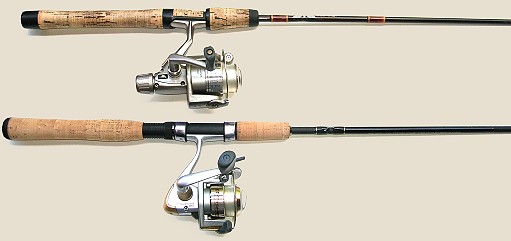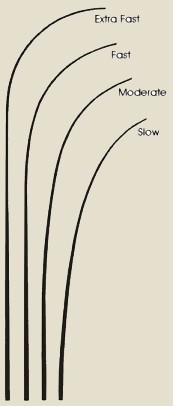Memancing di tengah gerombolan ikan kakap putih, Teritorial Utara
Tangkap ikan barramundi (kakap putih) besar ketika ikan ini bergerombol di Teritorial Utara. Berlangsung dari bulan Oktober sampai Desember, masa pra-monsun ini banyak sekali ikan kakap putih yang berkumpul di danau billabong dan muara sungai di Top End. Temukan tempat memancing di sekitar pelabuhan Darwin Harbour atau memancing di tepi sungai bersama pemancing profesional di Sungai Daly. Ikuti perjalanan wisata memancing naik helikopter ke Sungai Adelaide atau cari tempat yang penuh dengan ikan kakap putih di sepanjang Sungai Mary. Di Taman Nasional Kakadu yang terdaftar sebagai Warisan Dunia, Anda dapat memancing dari kapal di atas sungai South dan East Alligator. Sewa perahu, ikuti kapal penangkap ikan sewaan bersama pemandu berpengalaman atau bermalam di penginapan nelayan terpencil. Bagaimanapun Anda melihatnya, liburan memancing di tengah gerombolan ikan memberikan Anda tangkapan ikan kakap putih dan juga keindahan alam asli di daerah Top End. Dari Darwin, Anda dapat memilih kapal penangkap ikan sewaan dan kapten kapal yang berpengalaman. Pelabuhan Darwin sendiri terkenal dengan ikan tuna dan ikan talangnya, tapi Anda harus berlayar sedikit lebih jauh untuk memancing ikan kakap putih. Dapatkan beberapa ekor ikan kakap putih air asin yang mungkin terdapat di antara ikan kakap hitam dan kakap merah di Shoal Bay yang berdekatan. Atau ikuti petualangan dengan kapal sewaan selama beberapa hari ke Sungai Daly untuk memancing di muara sungai yang menakjubkan. Terletak lebih dari 200 km di sebelah barat daya Darwin, Sungai Daly menarik perhatian para pemancing dari seluruh pelosok Australia yang ingin menangkap ikan kakap yang sangat besar.
Dalam perjalanan wisata tiga hari, Anda juga bisa sampai di jaringan Sungai Mary, yang mengalir ke laut di Teluk Chambers, dan menjadi tempat memancing yang luar biasa saat pasang naik dan pasang surut. Baik sungai maupun dataran banjirnya merupakan tempat yang cocok untuk memancing ikan kakap putih, tapi Anda akan mendapatkan banyak sekali ikan tersebut di Shady Camp, Corroboree Billabong, Hardies Lagoon dan Tommycut Creek. Perairan ini juga penuh dengan ikan ketutu, saratoga dan ikan bulan-bulan.
Dapatkan pengalaman baru dalam perjalanan wisata memancing Anda dalam wisata memancing naik helikopter dari Darwin ke Sungai Adelaide. Nikmati pemandangan dari udara yang mengagumkan berupa lahan basah Teritorial Utara dan lihat kerbau dan babi liar berlarian saat helikopter mendarat. Lemparkan mata pancing Anda dari tempat yang aman dari buaya dan dengarkan bunyi buf yang khas yang menandakan umpan Anda dimakan ikan kakap putih.
Di Taman Nasional Kakadu yang terdaftar sebagai Warisan Dunia, perjalanan wisata memancing Anda dilengkapi dengan pemandangan menakjubkan, burung-burung yang sedang bermigrasi, buaya dan satwa liar. Ikuti tur memancing setengah hari atau sehari penuh menyusuri sungai South Alligator atau East Alligator dari Jabiru. Perairan Yellow Waters di Sungai South Alligator terkenal sebagai tempat memancing ikan kakap putih, terutama pada waktu ikan ini berkumpul sampai musim hujan.
Anda akan menemukan gerombolan ikan kakap putih yang sangat banyak di Sungai Victoria, sungai terpanjang di Teritorial Utara, yang terletak sekitar 250 km sebelah barat Katherine. Susuri jalan Savannah Way menuju sungai Timber Creek, jalan masuk terdekat untuk memancing.
Di Arnhem Land, Anda dapat bermalam di penginapan alam dan mengikuti safari memancing ikan kakap putih atau safari olahraga memancing di laut, sungai dan laguna pedalaman yang penuh dengan ikan kakap putih. Naik pesawat dari Darwin ke surga memancing terpencil Cape Don di Semenanjung Cobourg. Di sini ikan kakap putih besar hidup bersama ikan kakap merah, talang, kuwe, makarel, tuna, kakap jenaha, trout karang, kod, barakuda dan kakap hitam.
Selain musim melimpahnya ikan kakap putih, masa berkumpul ikan kakap putih juga merupakan masa penyelenggaraan lomba memancing di negara bagian ini. Ikuti lomba memancing Hummingbird Corroboree Park Challenge di Sungai Mary pada bulan Oktober. Atau tangkap tujuh spesies ikan dalam tiga hari dalam lomba memancing Saltwater Fly Fishing Challenge di pelabuhan Darwin Harbour. Setelah itu, pelabuhan ini menjadi tempat lomba memancing Gold Billfish Classic pada bulan yang sama. Berlomba untuk menangkap ikan kakap putih paling besar dalam lomba memancing Barra Bash di Sungai Roper pada bulan Oktober. Pada bulan November, Anda dapat menangkap ikan barakuda, ikan layaran dan ikan setuhuk dalam lomba memancing Arnhem Land’s Gove Game Classic.
Pergi ke Teritorial Utara di tempat berkumpulnya ikan kakap putih untuk liburan memancing di mana ikan kakap putih besar jarang terlepas.
Sumber
Dalam perjalanan wisata tiga hari, Anda juga bisa sampai di jaringan Sungai Mary, yang mengalir ke laut di Teluk Chambers, dan menjadi tempat memancing yang luar biasa saat pasang naik dan pasang surut. Baik sungai maupun dataran banjirnya merupakan tempat yang cocok untuk memancing ikan kakap putih, tapi Anda akan mendapatkan banyak sekali ikan tersebut di Shady Camp, Corroboree Billabong, Hardies Lagoon dan Tommycut Creek. Perairan ini juga penuh dengan ikan ketutu, saratoga dan ikan bulan-bulan.
Dapatkan pengalaman baru dalam perjalanan wisata memancing Anda dalam wisata memancing naik helikopter dari Darwin ke Sungai Adelaide. Nikmati pemandangan dari udara yang mengagumkan berupa lahan basah Teritorial Utara dan lihat kerbau dan babi liar berlarian saat helikopter mendarat. Lemparkan mata pancing Anda dari tempat yang aman dari buaya dan dengarkan bunyi buf yang khas yang menandakan umpan Anda dimakan ikan kakap putih.
Di Taman Nasional Kakadu yang terdaftar sebagai Warisan Dunia, perjalanan wisata memancing Anda dilengkapi dengan pemandangan menakjubkan, burung-burung yang sedang bermigrasi, buaya dan satwa liar. Ikuti tur memancing setengah hari atau sehari penuh menyusuri sungai South Alligator atau East Alligator dari Jabiru. Perairan Yellow Waters di Sungai South Alligator terkenal sebagai tempat memancing ikan kakap putih, terutama pada waktu ikan ini berkumpul sampai musim hujan.
Anda akan menemukan gerombolan ikan kakap putih yang sangat banyak di Sungai Victoria, sungai terpanjang di Teritorial Utara, yang terletak sekitar 250 km sebelah barat Katherine. Susuri jalan Savannah Way menuju sungai Timber Creek, jalan masuk terdekat untuk memancing.
Di Arnhem Land, Anda dapat bermalam di penginapan alam dan mengikuti safari memancing ikan kakap putih atau safari olahraga memancing di laut, sungai dan laguna pedalaman yang penuh dengan ikan kakap putih. Naik pesawat dari Darwin ke surga memancing terpencil Cape Don di Semenanjung Cobourg. Di sini ikan kakap putih besar hidup bersama ikan kakap merah, talang, kuwe, makarel, tuna, kakap jenaha, trout karang, kod, barakuda dan kakap hitam.
Selain musim melimpahnya ikan kakap putih, masa berkumpul ikan kakap putih juga merupakan masa penyelenggaraan lomba memancing di negara bagian ini. Ikuti lomba memancing Hummingbird Corroboree Park Challenge di Sungai Mary pada bulan Oktober. Atau tangkap tujuh spesies ikan dalam tiga hari dalam lomba memancing Saltwater Fly Fishing Challenge di pelabuhan Darwin Harbour. Setelah itu, pelabuhan ini menjadi tempat lomba memancing Gold Billfish Classic pada bulan yang sama. Berlomba untuk menangkap ikan kakap putih paling besar dalam lomba memancing Barra Bash di Sungai Roper pada bulan Oktober. Pada bulan November, Anda dapat menangkap ikan barakuda, ikan layaran dan ikan setuhuk dalam lomba memancing Arnhem Land’s Gove Game Classic.
Pergi ke Teritorial Utara di tempat berkumpulnya ikan kakap putih untuk liburan memancing di mana ikan kakap putih besar jarang terlepas.
Sumber


 Remove hooks quickly
Remove hooks quickly Hold the fish upright underwater after hook removal and allow it to swim away under its own power
Hold the fish upright underwater after hook removal and allow it to swim away under its own power





 Action refers to the flex characteristics of a rod, in other words how much the rod bends when you put pressure on the tip and how far the rod flexes. Action ranges from extra fast where just the tip flexes to slow or softer where the majority of the rod flexes. Fast action rods are the best choice when the fishing technique requires the sensitivity of feeling light biting fish or when fishing for large game fish in heavy cover and weeds where the key is to setting the hook fast with just a snap of the wrist moving the fish’s head up and away. For instance, fast action light rods are used for jigs, soft plastic worms or twitching minnow/shad shaped crank baits for bass and walleye. Heavier fast action rods are used for Muskies & Pike in burning bucktails, walking top water lures or a cadence retrieve on gliders and jerkbaits. The moderate action rod is the most common choice due to the versatility of fishing applications, in casting a moderate action rod it will bend for about half of it’s length which will provide more casting distance and still have the capability for a adequate hookset. Ideal for slip bobbers/floats live bait for walleye fishing because the fish is less likely to feel resistance from the soft tip and drop the bait, along with reaction lures such as crank baits, spinner baits and spoons for bass and pike where the slower action will not pull the lure out of the fish’s mouth. Slow or Soft Action rods will bend starting in the lower third using nearly the entire rod providing the most flexibility. Because of this parabolic action the angler is using the rod as a shock absorber in fighting the fish, this allows the use of very light line. These rods are used for panfish especially for the paper thin mouths on crappies so the hook is not ripped clear on hooksets, and are also popular for drift fishing spawn sac’s on trout and salmon streams.
Action refers to the flex characteristics of a rod, in other words how much the rod bends when you put pressure on the tip and how far the rod flexes. Action ranges from extra fast where just the tip flexes to slow or softer where the majority of the rod flexes. Fast action rods are the best choice when the fishing technique requires the sensitivity of feeling light biting fish or when fishing for large game fish in heavy cover and weeds where the key is to setting the hook fast with just a snap of the wrist moving the fish’s head up and away. For instance, fast action light rods are used for jigs, soft plastic worms or twitching minnow/shad shaped crank baits for bass and walleye. Heavier fast action rods are used for Muskies & Pike in burning bucktails, walking top water lures or a cadence retrieve on gliders and jerkbaits. The moderate action rod is the most common choice due to the versatility of fishing applications, in casting a moderate action rod it will bend for about half of it’s length which will provide more casting distance and still have the capability for a adequate hookset. Ideal for slip bobbers/floats live bait for walleye fishing because the fish is less likely to feel resistance from the soft tip and drop the bait, along with reaction lures such as crank baits, spinner baits and spoons for bass and pike where the slower action will not pull the lure out of the fish’s mouth. Slow or Soft Action rods will bend starting in the lower third using nearly the entire rod providing the most flexibility. Because of this parabolic action the angler is using the rod as a shock absorber in fighting the fish, this allows the use of very light line. These rods are used for panfish especially for the paper thin mouths on crappies so the hook is not ripped clear on hooksets, and are also popular for drift fishing spawn sac’s on trout and salmon streams.















